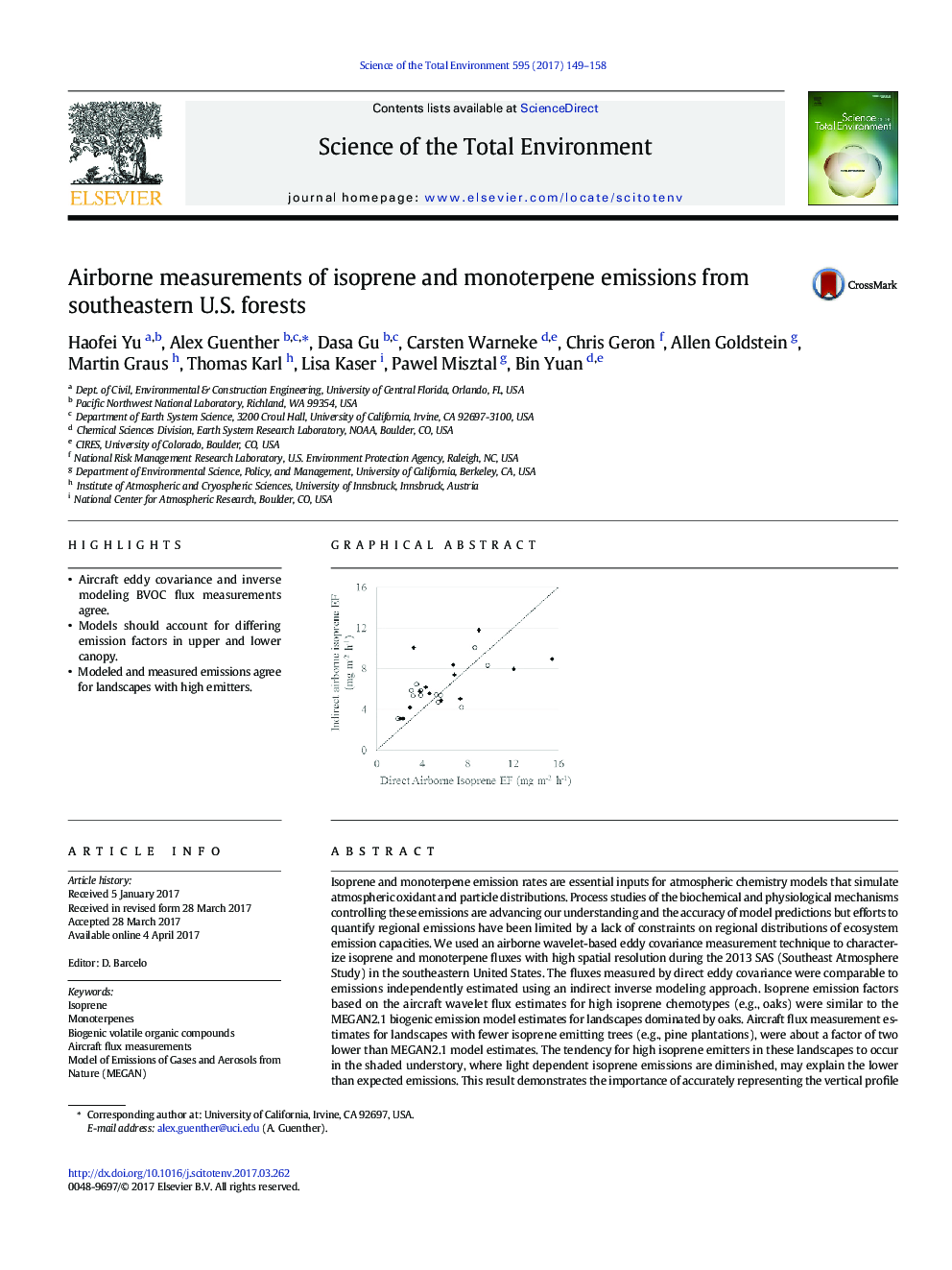| کد مقاله | کد نشریه | سال انتشار | مقاله انگلیسی | نسخه تمام متن |
|---|---|---|---|---|
| 5751272 | 1619701 | 2017 | 10 صفحه PDF | دانلود رایگان |
- Aircraft eddy covariance and inverse modeling BVOC flux measurements agree.
- Models should account for differing emission factors in upper and lower canopy.
- Modeled and measured emissions agree for landscapes with high emitters.
Isoprene and monoterpene emission rates are essential inputs for atmospheric chemistry models that simulate atmospheric oxidant and particle distributions. Process studies of the biochemical and physiological mechanisms controlling these emissions are advancing our understanding and the accuracy of model predictions but efforts to quantify regional emissions have been limited by a lack of constraints on regional distributions of ecosystem emission capacities. We used an airborne wavelet-based eddy covariance measurement technique to characterize isoprene and monoterpene fluxes with high spatial resolution during the 2013 SAS (Southeast Atmosphere Study) in the southeastern United States. The fluxes measured by direct eddy covariance were comparable to emissions independently estimated using an indirect inverse modeling approach. Isoprene emission factors based on the aircraft wavelet flux estimates for high isoprene chemotypes (e.g., oaks) were similar to the MEGAN2.1 biogenic emission model estimates for landscapes dominated by oaks. Aircraft flux measurement estimates for landscapes with fewer isoprene emitting trees (e.g., pine plantations), were about a factor of two lower than MEGAN2.1 model estimates. The tendency for high isoprene emitters in these landscapes to occur in the shaded understory, where light dependent isoprene emissions are diminished, may explain the lower than expected emissions. This result demonstrates the importance of accurately representing the vertical profile of isoprene emitting biomass in biogenic emission models. Airborne measurement-based emission factors for high monoterpene chemotypes agreed with MEGAN2.1 in landscapes dominated by pine (high monoterpene chemotype) trees but were more than a factor of three higher than model estimates for landscapes dominated by oak (relatively low monoterpene emitting) trees. This results suggests that unaccounted processes, such as floral emissions or light dependent monoterpene emissions, or vegetation other than high monoterpene emitting trees may be an important source of monoterpene emissions in those landscapes and should be identified and included in biogenic emission models.
40
Journal: Science of The Total Environment - Volume 595, 1 October 2017, Pages 149-158
